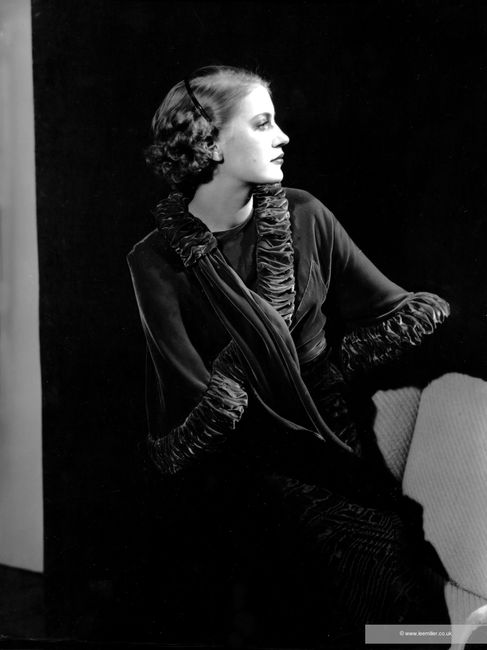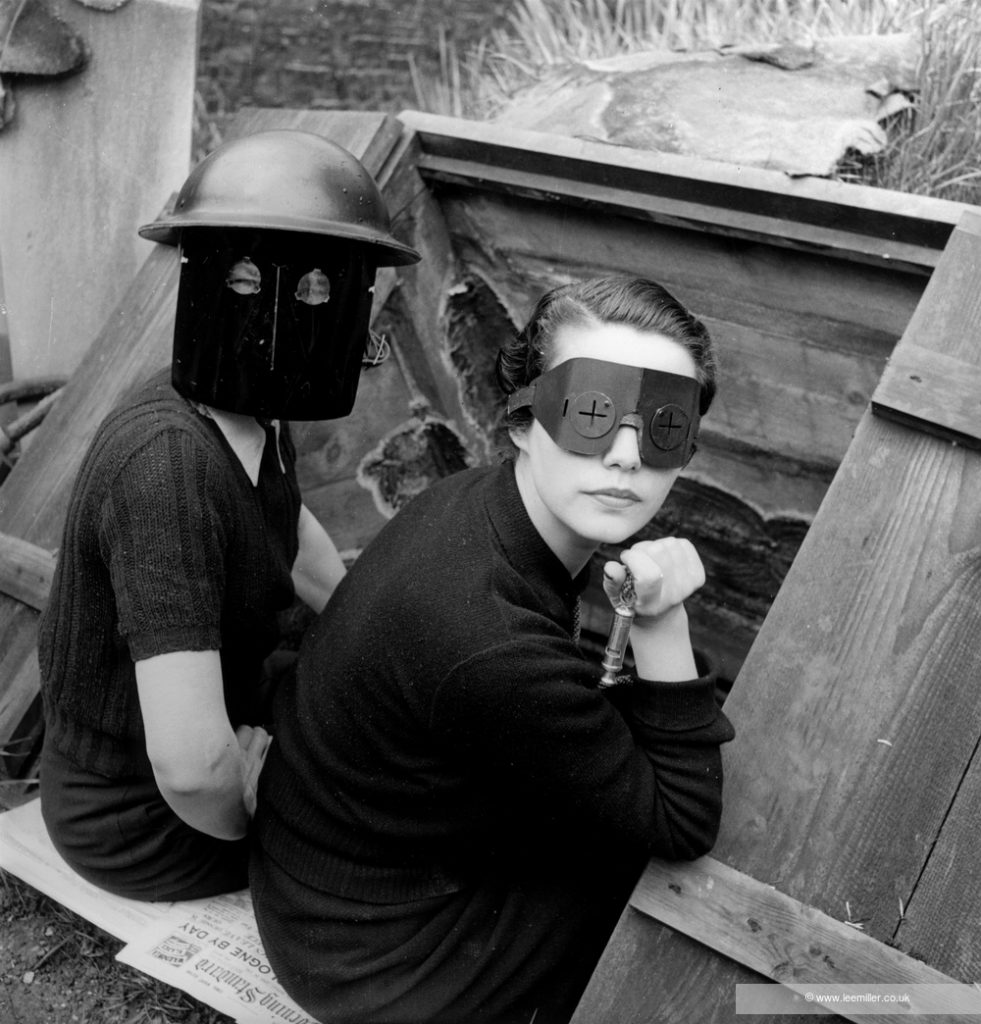by Sabrina Hughes
Lee Miller is a fascinating figure in the history of photography, and it is refreshing to experience a retrospective of her work of this size and scope, more than 130 images spanning her decades-long career. The Woman who Broke Boundaries was curated by Dr. William Jeffett, chief curator of exhibitions at The Dalí Museum in St. Petersburg, FL, with all photographs on loan from the Lee Miller Archives in Sussex, England, managed by her son Antony Penrose.
Miller’s career, and her photographic archive, represents her ceaseless drive to see, express, and experience. Her place in the industry and its history seems almost fated. Yet Miller’s insatiable ambition to become an important photographer and writer is sometimes downplayed in favor of telling the stories of her relationships to several key figures who Miller encountered along the way.
The exhibition’s organization is informed by The Lives of Lee Miller a biography that her son Antony Penrose wrote. However, since the first introduction visitors get to the exhibit’s thesis is “This exhibition tells the story of Lee Miller’s extraordinary and unconventional life as seen through her photographic portraits of others” it is within this framework that viewers are meant to situate what they learn of Miller—through her portraits of and relationships with others. The exhibition, however, does not address many of the tragedies of Miller’s early life and simplifies key relationships that were more complex than they seem.

circa 1932 by Lee Miller
(NYS 12-6-C) © Lee Miller Archives England 2020.
All Rights Reserved
The exhibition begins with a large didactic panel situating Miller as Artist, War Correspondent, Model & Muse. Miller modeled for Vanity Fair and Vogue in her late teens and early 20s and was vaunted as the pinnacle of beauty standards of the 1920s. This was how she met Edward Steichen, an absolute giant in the field of both artistic and commercial photography who would later become a curator at the Museum of Modern Art.
Miller was in front of, rather than behind, the camera during this period of her career, therefore this part of her life is not detailed much in the exhibition. Nevertheless, it represents the sum of numerous formative moments since Steichen wrote her a letter of introduction and recommendation to work with Man Ray, the American surrealist artist living in Paris.
Surrealist aims of accessing unconscious creativity, desires, and expression have a natural affinity with the medium of photography. Photography captures fractions of a moment that the eye and the brain experience very differently than what the camera captures. A photo represents a different plane of reality. Additionally, photography’s formal characteristics allow for techniques like cameraless image creation (photograms), double exposures, combination printing, and any other number of manipulations that distort the “reality” that photography represented for many.
Since surrealism as an art movement (including writers, poets, painters, and photographers, and other creators in all sorts of media) was preoccupied with Freudian psychology, women in the group may have had a challenge being taken seriously as creators and were more often treated as Muses—passive inspiration for the creators. Or at least that is how it’s been reported in the photo history books.
Miller’s relationship with Man Ray is well documented and marks the introduction to her photographic work proper in The Woman Who Broke Boundaries. This critical part of her photographic career also has scant representation in the exhibition. Though she was a model for Man Ray, Miller was far more than muse. They were technical and artistic collaborators. One of the surrealist photographic techniques that is synonymous with Man Ray’s legacy is that of solarization.

(NC00585) (c) Lee Miller Archives England 2020. All Rights Reserved.
A negative, while in the process of being developed (so while it is still sensitive to light exposure) is exposed to a brief bright light. The result is a sort of otherworldly reversal of some tones in the final photograph—the highlights and shadows create an illusion of lighting that would be impossible to achieve without the manipulation. Sometimes the relationship between figure and background is lost and the model appears to be a relief carved from stone.
History books say Ray invented the technique, but Miller reports that it was something that happened while she was working alone in the darkroom. In The Lives of Lee Miller, she is quoted: “It was all very well my making that one accidental discovery, but then Man had to set about how to control it and make it come out exactly the way he wanted to each time.”
In the biography, Penrose suggests “Few examples of her early photographs survived her subsequent traveling and the strange contempt in which she held her own work.” However, just a few pages later Penrose writes, “A measure of Lee’s and Man Ray’s mutual respect was that neither of them was seriously concerned when their credits were wrongly ascribed” indicating that some of Miller’s work may have been attributed to Ray at the time, and in legacy.
Miller’s photographs in this portion of the exhibition are representative of her avant-garde approach to portraiture—for sitters who were up for it. Solarized portraits of socialites such as Dorothy Hill denote a desire for Miller’s unique combination of techniques developed while working with Ray and her own sense of what makes remarkable portraits.
This segment of the exhibition also showcases photographs of Miller’s friends, surrealist artists, and work she made in Egypt. The former grouping, Miller and friends, is a name-dropper’s paradise. With the pictures as proof of Miller’s intimate association with major artists, her own renown as an artist grew.
Her photographs from the period she lived in Egypt are among the most fascinating of the exhibition. It seems to have taken Miller a while to resuscitate her creativity after marrying and moving to Egypt, but the images she eventually produced defined her mature photographic style. When creatively unfettered and free to pursue her own vision, Miller’s style of surrealist photography creates a playful tension by highlighting odd juxtapositions of subject matter. Portrait of Space (1937), an image made in Al Bulwayeb, near Siwa, Egypt, demonstrates the way an everyday scene can become a record of a dream in Miller’s hands. A simple torn window screen becomes an aperture to an otherwise shrouded ambiguous landscape—is it desert or beach? An oddly hung mirror seems to reflect the blank wall behind the photographer, but it also looks like it is a portal into the sky. It is hard to look away from the image because it invites and rewards close looking.
Miller’s wartime photographs also demonstrate her style of surrealism-via-juxtaposition. The realities of life in London during the Blitz must have eclipsed the surrealist visions she experienced in the desert.

(3840-8) © Lee Miller Archives England 2020. All Rights Reserved
She remained on staff as a photographer for Vogue and in 1942 Miller became accredited as a war photographer giving her the right to travel with the US Army. When Miller left London for the mainland, she found that she thrived in the bedlam of war. She was present for the Liberation of Paris, for the horrific discoveries at Buchenwald and Dachau, and for the first entry to the Berghof with its secret mountain passages. Her dispatches to Vogue began to slow as the world tried to move on after the war. Eventually, Miller also moved on from photography, leaving it almost completely in her past by 1954.
Miller’s life was indeed extraordinary and unconventional, and she is a photographer who should be celebrated for the boundaries she broke. The pictures in the exhibition don’t always stand on their own to demonstrate how exceptional she was, which is why the didactic text in the galleries (essays and label text) is so important for interpretive context. This is where the exhibition’s theme either becomes clear or not.
In my subjective experience, the exhibition doesn’t achieve its goal which I’ll repeat here: “This exhibition tells the story of Lee Miller’s extraordinary and unconventional life as seen through her photographic portraits of others.” As a woman and an artist, I would not like my life simplified to the degree that Miller’s has been to suit this simultaneously too-wide and too-narrow theme.
The unspoken subtext of the exhibition, as I experienced it, seems to focus on Miller almost as connective tissue among the notable men she met along the way. Viewers may be spurred, as I was, to find out more about Miller’s life that’s hinted at between the lines of The Woman Who Broke Boundaries. In the exhibition writing there is a lot about Miller’s extraordinary life and trailblazing career that is glossed over, euphemized, or just plain omitted.
What is evident from the work in this exhibition is that Miller was a master photographer, technician, and storyteller who created meaningful portraits and documents of her age with equal prowess. The opportunity to see such a range of photographs from an artist of Miller’s stature is not to be missed.
The Woman who Broke Boundaries: Photographer Lee Miller is on view exclusively at The Dalí Museum in St. Peterburg, Florida, through Jan. 2, 2022.
Bay Art Files contributor Sabrina Hughes holds an M.A. in Art History from the University of South Florida with a focus on the History of Photography. Hughes has worked at the National Gallery of Art and the Museum of Fine Arts, St. Petersburg and is an adjunct instructor at USF and is the founder and principal of photoxo, a personal archiving service specializing in helping people preserve their family photos. She has an ongoing curatorial project, Picurious, which invests abandoned slides with new life. Follow her on Instagram @sabrinahughes for selfies, hiking, and dogs, and @thepicurious for vintage photos.

